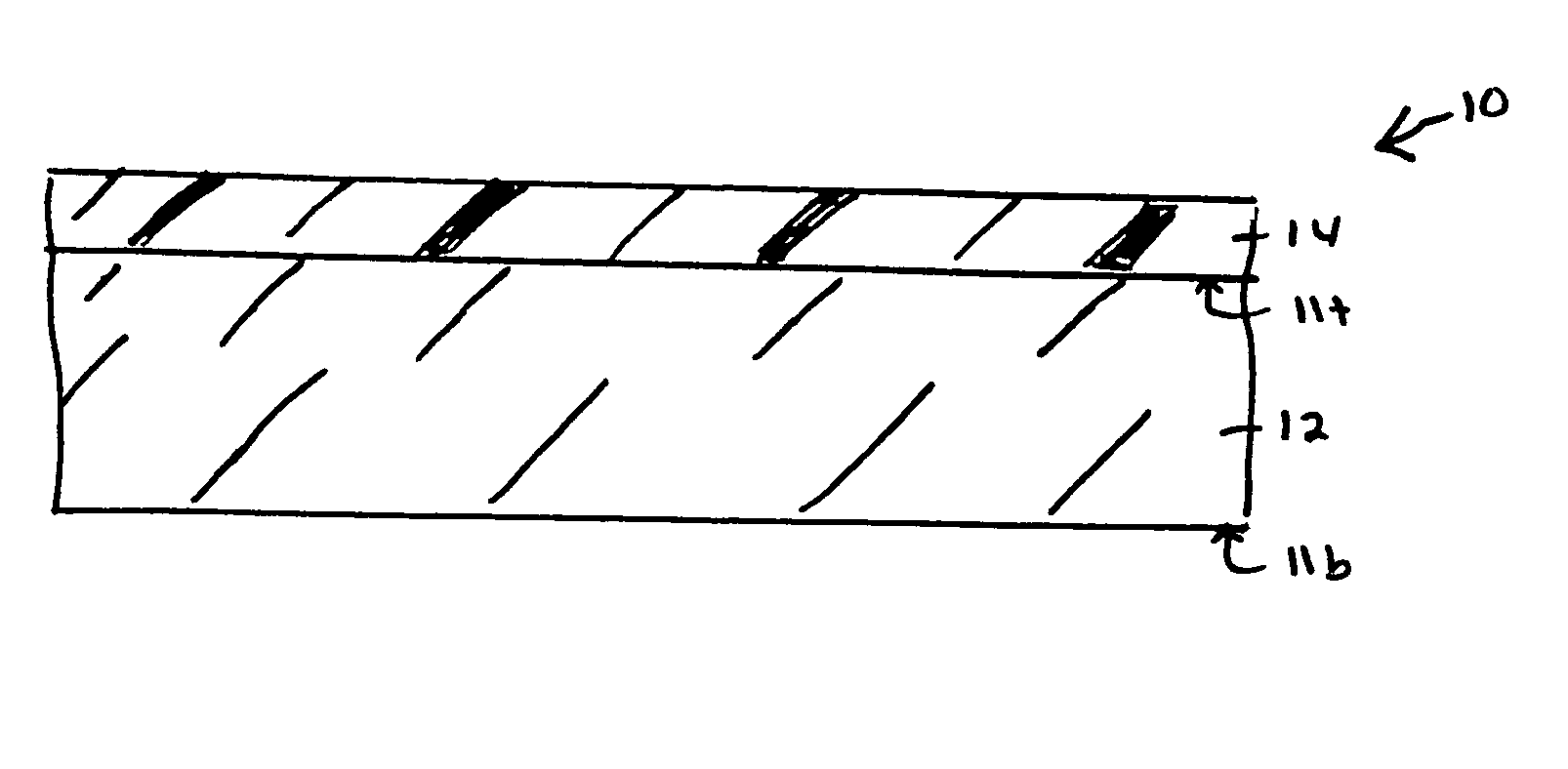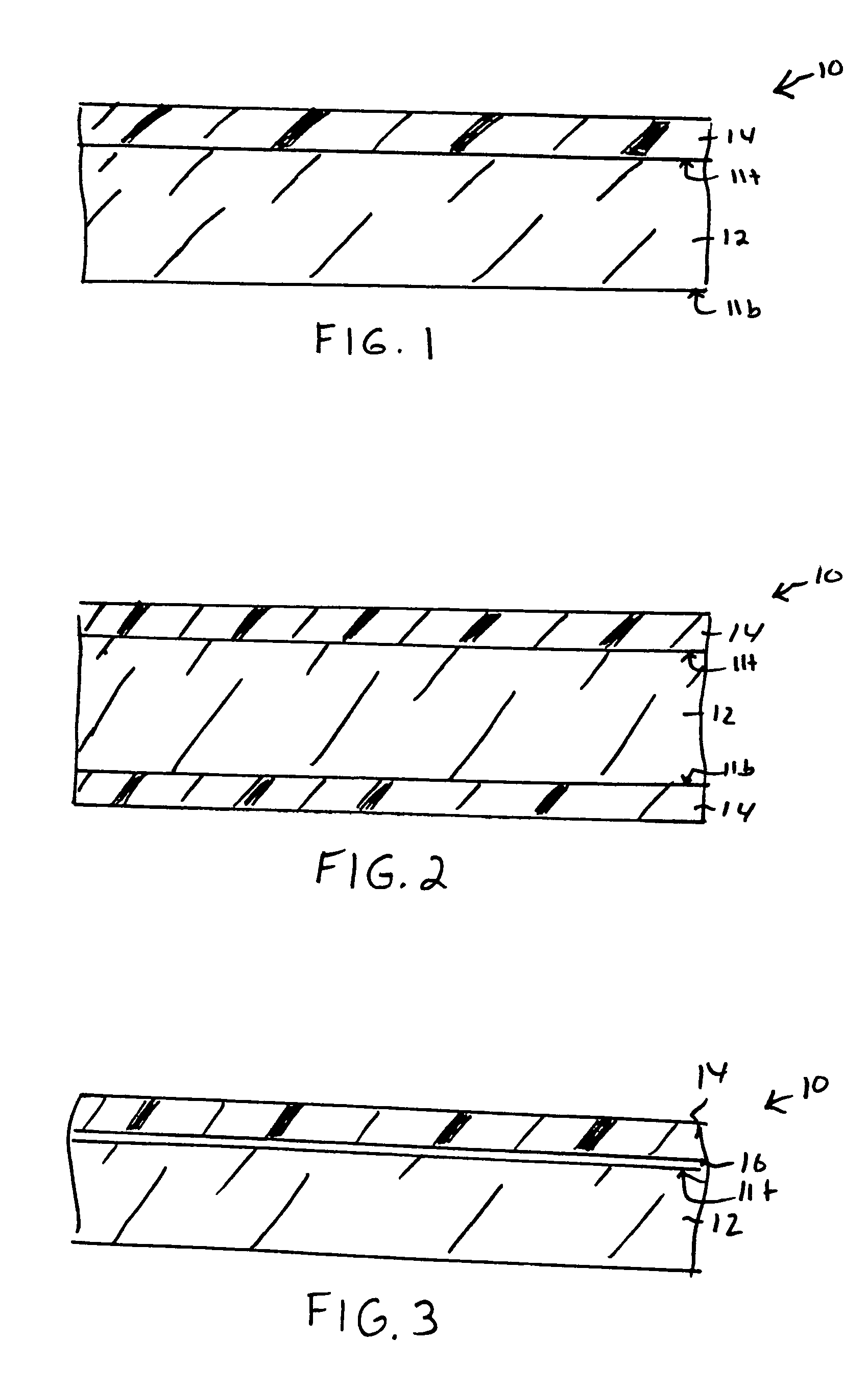Breathable non-asphaltic roofing underlayment
a roofing and non-asphaltic technology, applied in the field of building materials composites, can solve the problems of high cost, high risk of manufacture, and wrinkles of asphaltic underlayments available in the market, and achieve the effects of improving skid resistance, high coefficient of resistance, and reducing the risk of slipping
- Summary
- Abstract
- Description
- Claims
- Application Information
AI Technical Summary
Benefits of technology
Problems solved by technology
Method used
Image
Examples
Embodiment Construction
[0018]The present invention, which provides a non-asphaltic underlayment that is breathable, water-resistant and skid resistant, will now be described in greater detail by referring to the following description and drawings that accompany the present application. In the accompanying drawings, like and / or corresponding elements are referred to by like reference numerals.
[0019]FIGS. 1, 2 and 3 of the present application illustrate various embodiments of the present invention. Specifically, FIGS. 1, 2 and 3 are cross-sectional views showing the non-asphaltic underlayment 10 of the present invention.
[0020]In FIG. 1, there is illustrated a two-piece non-asphaltic underlayment 10 that comprises a substrate 12 having a breathable thermoplastic film (BTF) 14 applied to a top surface lt of the substrate 12. The substrate 12 is typically substantially non-water-resistant. In this embodiment, the top surface including the breathable thermoplastic film 14 will face in a direction opposite of th...
PUM
| Property | Measurement | Unit |
|---|---|---|
| thickness | aaaaa | aaaaa |
| thickness | aaaaa | aaaaa |
| thickness | aaaaa | aaaaa |
Abstract
Description
Claims
Application Information
 Login to View More
Login to View More - Generate Ideas
- Intellectual Property
- Life Sciences
- Materials
- Tech Scout
- Unparalleled Data Quality
- Higher Quality Content
- 60% Fewer Hallucinations
Browse by: Latest US Patents, China's latest patents, Technical Efficacy Thesaurus, Application Domain, Technology Topic, Popular Technical Reports.
© 2025 PatSnap. All rights reserved.Legal|Privacy policy|Modern Slavery Act Transparency Statement|Sitemap|About US| Contact US: help@patsnap.com


